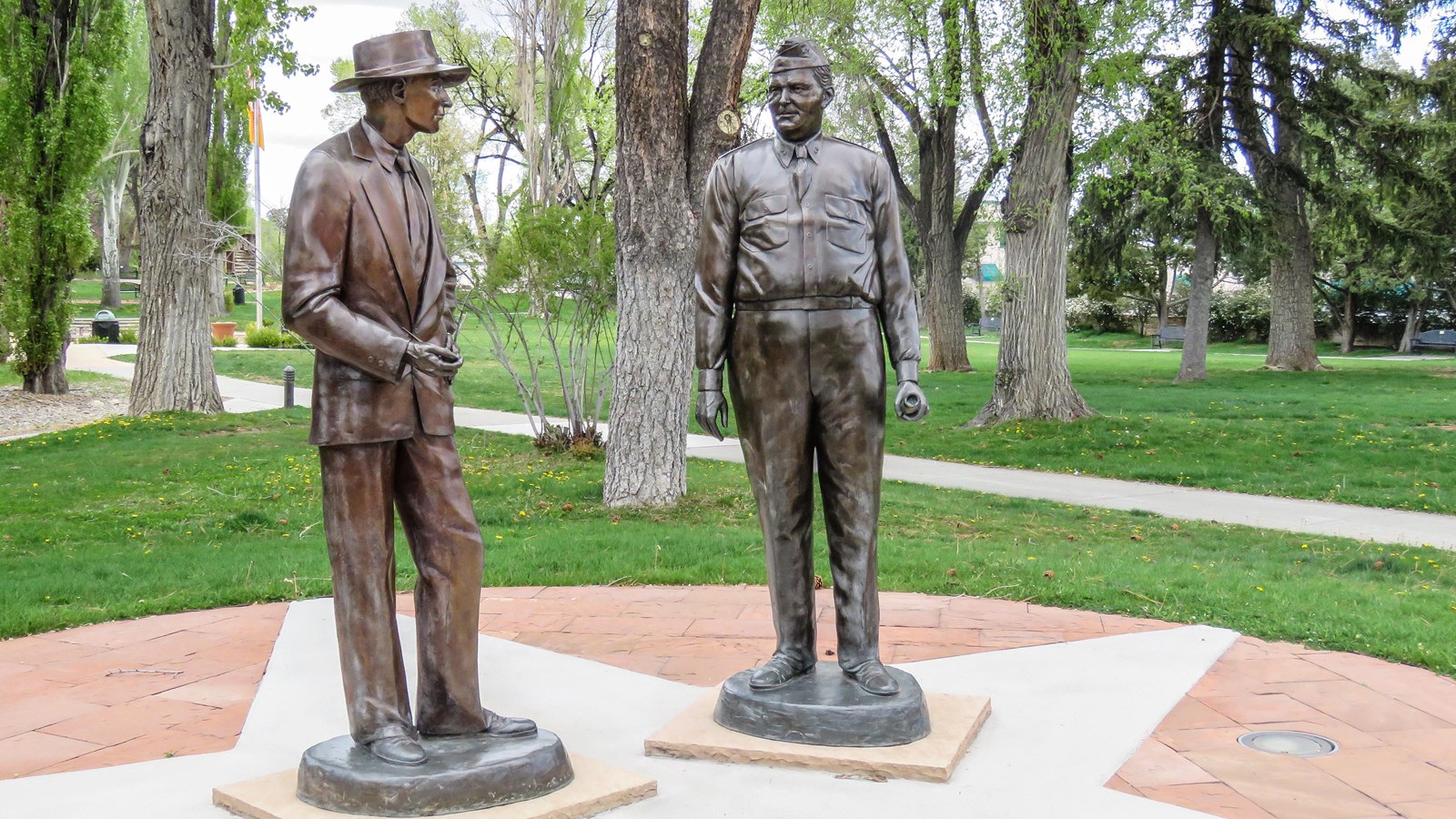Last updated: February 6, 2023
Place
Groves and Oppenheimer Statues

NPS/GLOWINSKI
General Leslie R. Groves and Dr. J. Robert Oppenheimer played crucial roles in the Manhattan Project. Groves was the military leader of the project, reporting to Army Chief of Staff George Marshall, Secretary of War Henry Stimson and, ultimately, to President Franklin Roosevelt.
Groves selected Oppenheimer to oversee the Los Alamos Laboratory, gathering top scientists and engineers from across the country and throughout the world to design and fabricate the world’s first atomic weapons.
The son of an Army chaplain, Groves had grown up in the Army. After graduating from West Point in 1918, he was assigned to the Army Corps of Engineers. He was a dominant, controlling personality, a practical-minded military engineer, brusque, egotistical, and confident. He would later tell his associates, “If I can’t do the job, no one man can.” He had overseen the construction of the Pentagon in Washington, DC in 1939.
Groves needed to find a director for the scientists who would ultimately design and build the bomb. That person also had to possess unique characteristics. Groves and the scientists came from different worlds. They found Groves overbearing and demanding. He found them theoretical and totally oblivious to the practical problems associated with building huge and complicated construction projects quickly. He needed someone to bridge the gap.
He ultimately chose 38-year-old Dr. J. Robert Oppenheimer, a charismatic theoretical physicist at the University of California at Berkeley. The son of a wealthy New York textile importer, he graduated summa cum laude in physics in three years. He received his PhD degree at twenty-three and accepted a teaching position at the California Institute of Technology. Already familiar with the design concepts of a bomb, Oppenheimer would be Groves’ intermediary with the scientists and direct all research on the bomb in one location.
The thin, chain-smoking Oppenheimer was “eccentric” by his own admission, had relatively little administrative experience, had not won a Nobel Prize, and had family members who were suspected of being communist sympathizers. Despite all that, Groves personally issued his security clearance in July 1943 over the objection of the FBI. The two formed a special relationship, understanding that the bomb might be the route to future fame for them both.
Continue Your Journey
As you walk around downtown Los Alamos, you can explore the rest of the Los Alamos Historical Society campus. At the Los Alamos History Museum you’ll find exhibits on various eras in the history of Los Alamos. Learn about local homesteaders at the Romero Cabin and Ancestral Pueblo people at the nearby Ancestral Pueblo Site. Walk down Bathtub Row to see the Oppenheimer House and check out the Cold War exhibits in the Hans Bethe House.
Just across Central Ave from Fuller Lodge you'll find Ashley Pond, another centerpiece of the Los Alamos community. On the southern bank of the pond, the Ice House stands as a memorial to the Los Alamos Ranch School days and Project Y.
